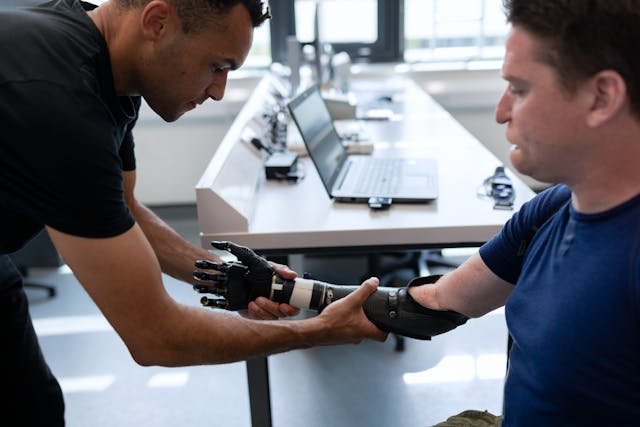When someone goes through an amputation, the recovery journey doesn’t end after the surgery. In fact, that’s just the beginning of a new chapter. From healing the limb to learning how to walk again with a prosthetic, it takes a full team of experts to guide that journey. Two of the most important people in that team are the surgeon and the prosthetist. When they work together from the start, the person recovering has a much better chance at a strong and confident future.
At Robobionics, we have seen how powerful this partnership can be. When surgeons and prosthetists communicate, plan, and support each other, everything moves more smoothly for the patient. From shaping the limb properly during surgery to choosing the right prosthetic later, every step becomes more aligned and easier to manage. This article dives deep into how this collaboration works and why it matters so much in building better outcomes for people after amputation.
Starting Early: How Communication Before Surgery Makes a Difference
One of the most important stages in any recovery is actually the time before the surgery happens. This is when planning begins. It’s when the surgeon prepares for the procedure, but it’s also the perfect time to involve the prosthetist. When both professionals start working together early, the outcomes are better and smoother for the patient.
Setting Shared Goals for Recovery
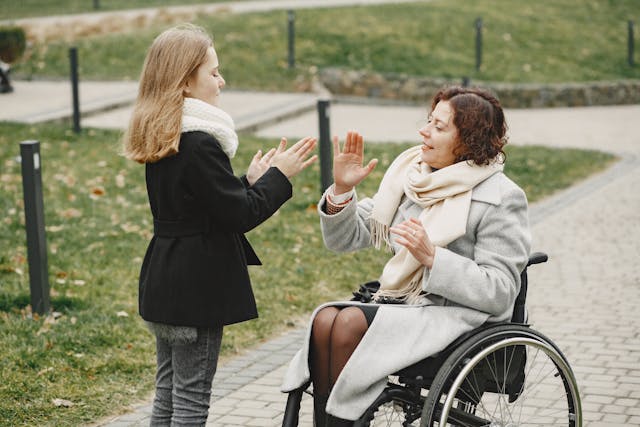
When a surgeon meets with a prosthetist before surgery, they can talk about the long-term goals for the person undergoing the amputation. This is not just about removing damaged tissue or saving a life. It’s about helping someone live fully again afterward. The surgeon needs to know what kind of prosthetic the person might use in the future. And the prosthetist needs to understand how the surgery will affect the shape and movement of the limb.
By setting shared goals, both experts focus not just on the operation, but also on life after surgery. For example, if the person wants to go back to work, walk long distances, or play sports, that affects how the limb should be shaped and where muscles are preserved. These decisions matter.
At Robobionics, we work closely with surgical teams during pre-operative planning whenever possible. This helps set the stage for a better prosthetic fit and faster rehabilitation later.
Choosing the Right Level of Amputation
Sometimes, the level of amputation can be adjusted depending on how much damage there is. In these situations, the surgeon might consult with the prosthetist to understand how the level of limb removal will affect prosthetic design. For example, preserving the knee in a below-knee amputation makes walking easier later. But if infection or trauma makes that risky, the team must find the best possible option together.
The surgeon has deep knowledge about how the body will heal. The prosthetist understands how the limb will support movement later. When both work together, they can make smarter choices that protect both health and mobility.
Robobionics supports this decision-making process by providing detailed input on how different limb lengths affect prosthetic comfort and control. This helps the surgeon create a better base for long-term success.
Preparing the Patient Mentally and Physically
In many cases, the surgeon is the first point of contact for the patient. That’s why it’s so important for the surgeon to begin the conversation about prosthetics early. This helps the person feel hopeful and prepared, instead of confused or scared. When the prosthetist is brought into this conversation before surgery, it allows the patient to understand what recovery will look like in a more complete way.
The patient can ask questions, understand timelines, and even see sample prosthetics. This early exposure makes the journey ahead feel less overwhelming. It also builds trust between the person and the full care team.
At Robobionics, we often offer free pre-surgery consultations where we answer questions and explain what prosthetic options will be available. This small step can make a big emotional difference.
Post-Surgical Healing: Building a Limb That Supports a Prosthetic
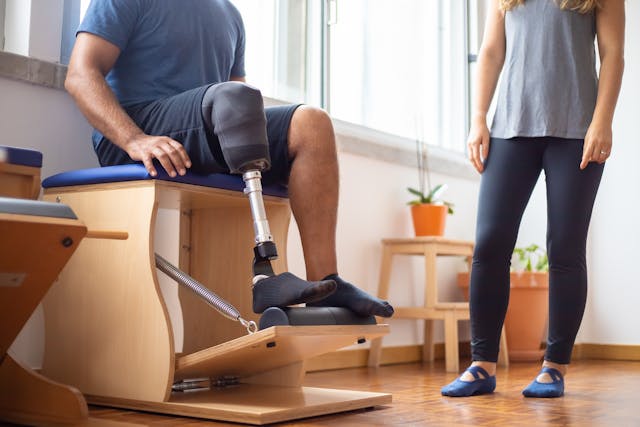
After surgery, the body begins to heal—but healing isn’t just about closing a wound. It’s also about shaping the limb in a way that can comfortably support a prosthetic in the future. This phase is where communication between the surgeon and prosthetist becomes even more important.
Managing Limb Shaping and Volume Changes
During the first few weeks, the residual limb changes shape as swelling goes down and muscles adjust. If the limb is not shaped well, it can be hard to fit a prosthetic socket comfortably later. This is where surgeons and prosthetists need to stay in touch. The surgeon monitors healing and refers back to the prosthetist for advice on compression, wrapping, or temporary shaping devices.
Good limb shaping leads to a better fit. A better fit leads to better walking, less pain, and faster therapy. When the prosthetist gets updates about healing progress, they can plan the first fitting more accurately.
At Robobionics, we provide post-surgical limb support kits and guidance that help maintain proper shape while protecting the healing tissue. This step ensures that the final prosthetic will not only fit better but feel better too.
Preventing Scar Tissue and Contractures
Scars, skin tension, and joint tightness are all common challenges after amputation. If not managed early, these issues can make it harder for the prosthetist to create a socket that feels stable. When the surgeon works closely with a prosthetist and therapist, they can watch for early signs of these problems and take action.
Simple stretches, positioning techniques, and dressing changes can make a big difference. But they must be done consistently and with the right focus. That’s why having the prosthetist involved early is so helpful—they understand what kind of limb posture will matter most during fitting.
Robobionics shares rehab protocols with surgeons and hospitals so that everyone is on the same page. When all team members are aligned, recovery becomes smoother for the person using the prosthetic.
Deciding the Right Time for Prosthetic Fitting
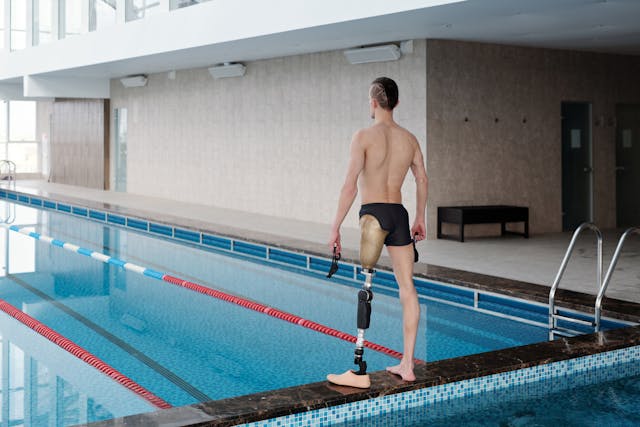
There’s always a question after surgery: when is the right time to begin prosthetic use? Too soon, and the limb may still be too sensitive. Too late, and the muscles begin to weaken, and motivation may drop. This is a decision that should be made together by the surgeon and prosthetist based on the individual’s healing progress.
Some people are ready for an early or immediate post-operative prosthetic within days or weeks. Others may need to wait longer. Either way, clear communication ensures that the prosthetic fitting is done at the right time, with the right equipment, and without any added risk.
Robobionics offers both immediate fit systems and traditional setups, depending on the surgeon’s guidance and the user’s condition. We prioritize safety, readiness, and patient confidence in every case.
Collaborative Prosthetic Fitting: Getting the Right Fit Together
Once the residual limb has healed enough, the process of fitting the prosthetic begins. But this phase isn’t just about measurements and parts—it’s also about matching the prosthetic to the body’s natural shape and the user’s daily life. The best results come when the surgeon and prosthetist remain in contact and continue sharing updates during this phase of care.
Understanding Surgical Landmarks and Limb Anatomy
Every limb is different after surgery. Even two people with the same level of amputation can have very different limb shapes, muscle placement, and scar patterns. The surgeon knows the internal layout of the limb—the nerves, bone structure, and soft tissues. Sharing that insight with the prosthetist helps create a better-fitting, more comfortable socket.
This inside knowledge allows the prosthetist to avoid pressure points, protect nerve endings, and support weight-bearing areas more safely. It also helps in selecting the type of socket and suspension system that will work best for the user’s lifestyle.
At Robobionics, we encourage collaborative reviews of surgical reports and clinical notes so that every prosthetic design is based on detailed knowledge—not just an outside measurement. This level of precision reduces discomfort and improves the chances of long-term success.
Customizing the Prosthetic Based on Healing Progress
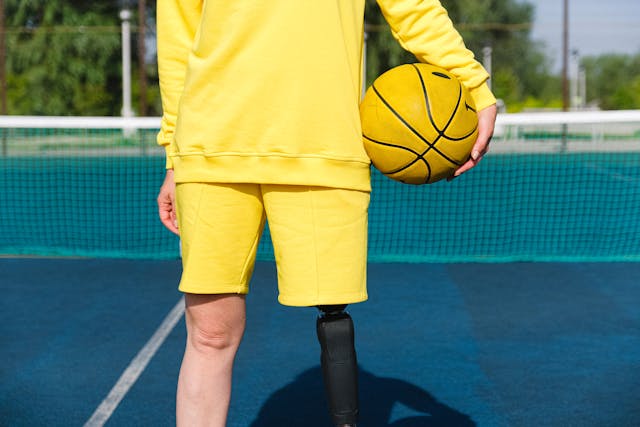
No two users follow the same healing timeline. Some recover quickly and are ready for advanced movement early on, while others may need more time. When the surgeon shares updates on muscle strength, skin sensitivity, or ongoing medical needs, the prosthetist can adapt the fitting process accordingly.
For example, someone with delayed healing might begin with a softer socket or partial-weight-bearing system. Others may need extra support or suspension options if their limb lacks strong shape definition. Having updated clinical information allows the prosthetist to fine-tune every part of the design for safety and comfort.
At Robobionics, we never follow a one-size-fits-all approach. Our devices are custom-made, and our team adjusts each component with care, depending on what the surgeon and patient share during check-ins.
Helping the Patient Adapt to the New Limb
Even with a well-fitted prosthetic, the early days of wearing it can feel awkward. Muscles that haven’t moved in weeks now have to support the body again. Balance needs to be re-learned. Skin needs to toughen up. This phase is both physical and emotional.
When the prosthetist and surgeon work together, they can guide the user more confidently through this transition. If the person reports pain, the surgeon can rule out medical issues while the prosthetist checks for fit problems. If the user is scared or unsure, both can provide reassurance and guidance based on their shared expertise.
Robobionics offers trial fittings, rehab partner support, and progress tracking tools to help every user adjust step-by-step. And because we stay connected to both the user and their surgeon, any issue is solved quickly—without confusion or delay.
Long-Term Rehabilitation: A Shared Approach to Progress
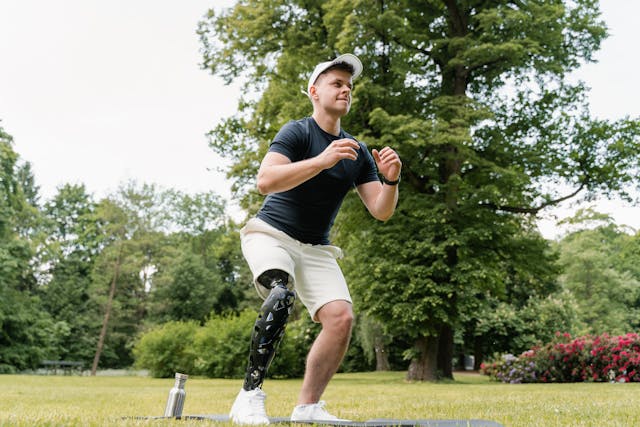
The fitting of the prosthetic is not the final step. In fact, it’s the beginning of a longer journey. The months that follow are just as important, and during this time, surgeons and prosthetists continue to play a key role in supporting both physical movement and emotional recovery.
Monitoring Limb Health Over Time
Even after the prosthetic is in place, the residual limb can change. Muscles strengthen, volume shifts, and sometimes new skin or nerve issues appear. That’s why regular reviews with both the surgeon and prosthetist matter. The surgeon checks for internal health, while the prosthetist checks for comfort, alignment, and wear-and-tear.
Together, they can catch problems early—like pressure sores, gait imbalances, or socket loosening—before they become serious. They can also update the rehab plan based on how the person is responding to movement, exercise, or socket wear.
At Robobionics, we offer regular follow-up reviews and send reports to the referring surgeon so that the full medical picture stays clear. This kind of teamwork gives the user confidence that nothing will be missed.
Supporting Functional Goals Through Team Rehab
Every prosthetic user has personal goals. Some want to return to work. Some want to drive. Some want to play sports or care for their families. These goals shape how rehab is planned—and both the prosthetist and surgeon need to understand them clearly.
When the whole team—including therapists—works together, the path forward becomes clearer. The surgeon ensures the body is strong enough. The prosthetist adjusts the prosthetic for comfort and balance. And the therapist helps train the body for real-life movement.
Robobionics builds prosthetic systems that adapt over time, so we often coordinate adjustments based on changing goals. Our users don’t just walk—they thrive, with support from every direction.
Encouraging Emotional Recovery Through Consistent Care
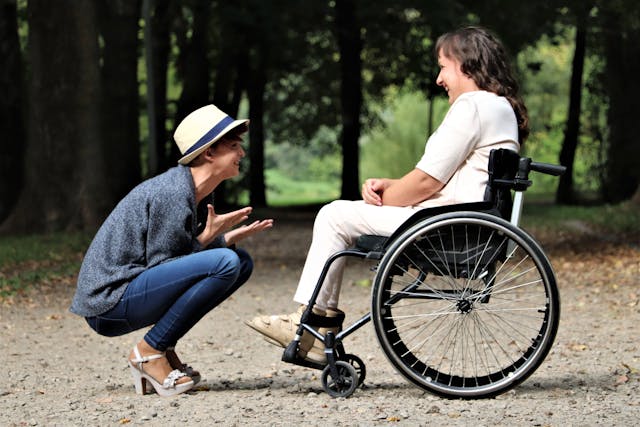
Post-amputation recovery isn’t only physical. It’s emotional, too. People go through fear, sadness, frustration, and even loss of identity. But when the surgeon, prosthetist, and support team stay involved, the user feels less alone. They see familiar faces, receive consistent advice, and build trust in their progress.
Simple things like regular follow-up calls, joint clinic visits, and shared rehab check-ins can build a strong sense of support. When the user feels supported, they are more likely to stay active, wear their prosthetic regularly, and reach for their goals.
At Robobionics, we never treat prosthetic care as a single event. We treat it as an ongoing relationship. And we’re proud to be part of a team that always puts the user first—from the first surgical consult to the final rehab milestone.
Conclusion
The journey after amputation is not something that can be managed by one expert alone. It takes a team—working together, communicating often, and sharing one goal: to help the person move forward with strength, confidence, and dignity. When surgeons and prosthetists work side by side, the results speak for themselves. Healing becomes smoother. Prosthetic fitting becomes easier. Recovery becomes faster. And most importantly, the person at the center of it all feels seen, heard, and supported.
At Robobionics, we believe in this team-based approach. We don’t just build prosthetics—we build partnerships. We collaborate closely with surgeons, therapists, and caregivers at every stage of the journey. From pre-surgery planning to post-rehab care, we make sure every decision is aligned, every voice is heard, and every user gets the best possible outcome.
If you’re a healthcare provider looking to collaborate for better patient outcomes, or if you’re a user preparing for amputation or recovery, we’re here for you. Contact Robobionics today for a free consultation and discover how teamwork can transform recovery—one step at a time.



